|
My Links
|
DDG-51 ARLEIGH BURKE-class
The composition of the fleet is changing rapidly as modern ARLEIGH BURKE guided missile AEGIS destroyers enter active commissioned service. The Navy considers the newest Arleigh Burke-class destroyer to be its most capable and survivable surface combatant. The DDG 51 was the first U.S. Navy ship designed to incorporate shaping techniques to reduce radar cross-section to reduce their detectability and likelihood of being targeted by enemy weapons and sensors. Originally designed to defend against Soviet aircraft, cruise missiles, and nuclear attack submarines, this higher capability ship is to be used in high-threat areas to conduct antiair, antisubmarine, antisurface, and strike operations. DDG 51s were constructed in flights, allowing technological advances during construction. Flight II, introduced in FY 1992, incorporates improvements to the SPY radar and the Standard missile, active electronic countermeasures and communications. Flight IIA, introduced in fiscal year 1994, added a helicopter hangar with one anti-submarine helicopter and one armed attack helicopter. The initial ARLEIGH BURKE-class guided missile destroyers have a full load displacement of 8,300 tons, are 506 feet in overall length and have a 62 foot beam. They are driven by two shafts powered by four LM2500 engines. Their maximum speed is in excess of 30 knots and they have a cruising range of 4,400 n. miles at 20 knots. The ships complement is about 30 officers and 302 enlisted personnel. All ships of this class have the AEGIS air defense system with the SPY-1D phased array radar. They are armed with a 90-cell Vertical Launching System capable of storing and rapidly firing a mix of Standard, Tomahawk, and Vertically Launched ASROC (VLA) missiles for either Air Defense, Strike Warfare, or Anti-Submarine Warfare missions. Other armament includes the Harpoon anti-ship cruise missile, the 5"/54 gun with improvements that integrate it with the AEGIS weapon system, and the Phalanx Close-in Weapon System for self-defense. The AN/SPY-1D Phased Array Radar incorporates significant advances in the detection capabilities of the AEGIS Weapons System, particularly in its resistance to enemy Electronic Counter-Measures (ECM). The AEGIS system is designed to counter all current and projected missile threats to the Navy's battle forces. A conventional, mechanically rotating radar "sees" a target when the radar beam strikes that target once during each 360 degree rotation of the antenna. A separate tracking radar is then required to engage each target. In contrast, the computer-controlled AN/SPY-1D phased array radar of the AEGIS system brings these functions together within one system. The four fixed arrays of "SPY" send out beams of electromagnetic energy in all directions simultaneously, continuously providing a search and tracking capability for hundreds of targets at the same time. Using the SPY-1D and her Mark 99 Fire Control System, these ships can guide vertically-launched Standard Missiles to intercept hostile aircraft and missiles at extended ranges. To provide point defense against hostile air targets, the ships are equipped with the Block 1 upgrade to the Phalanx Close-In-Weapons System (CIWS). DDG-51 ARLEIGH BURKE-class Photos 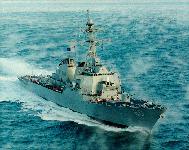
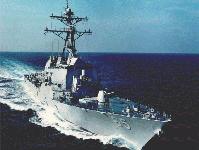
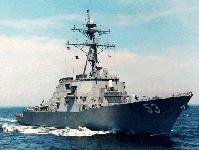
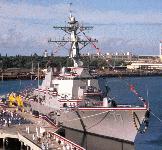
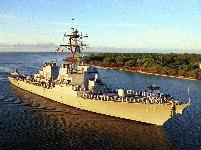
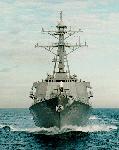
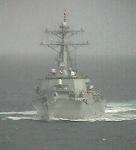


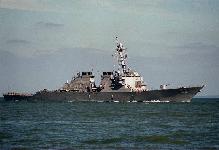
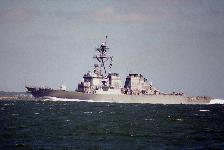
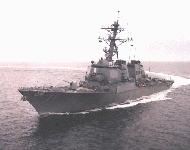
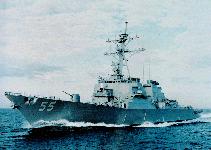
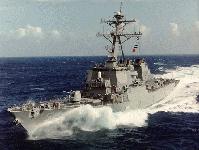
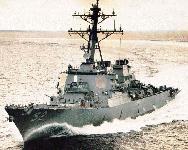

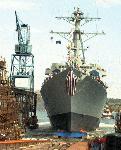


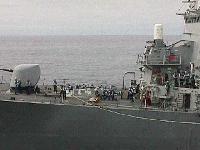
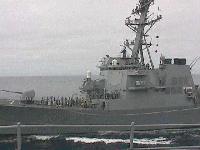

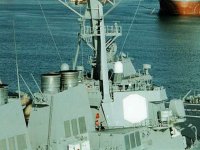
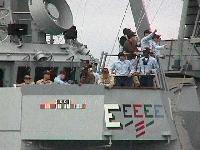
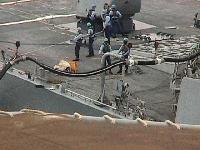
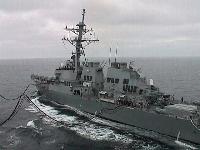

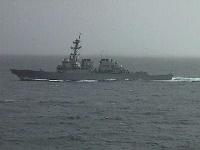

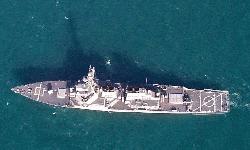
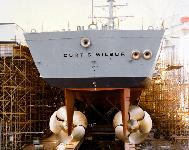


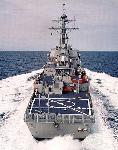
|
| Copyright © 2002, Josh Riccio, All Rights Reserved. | |